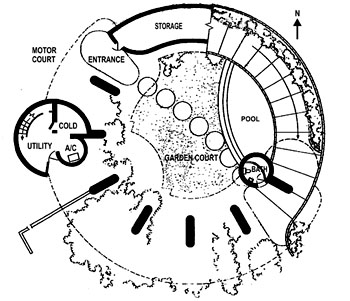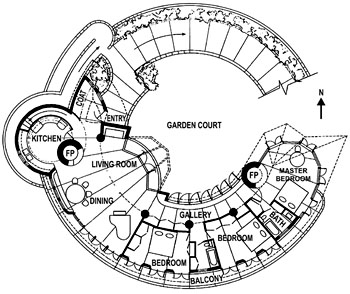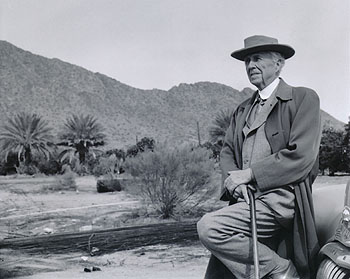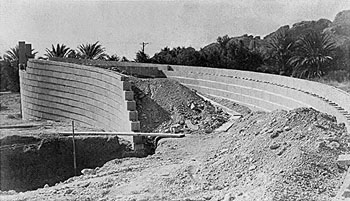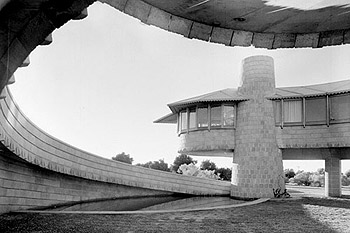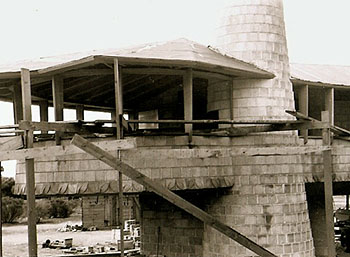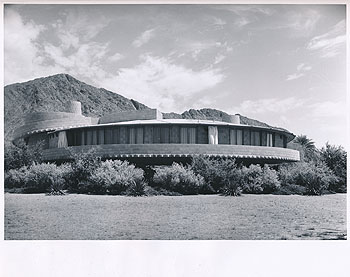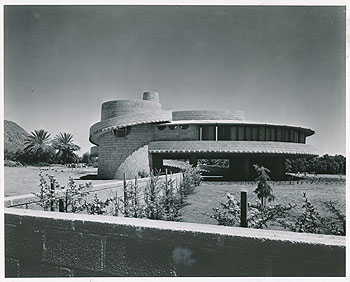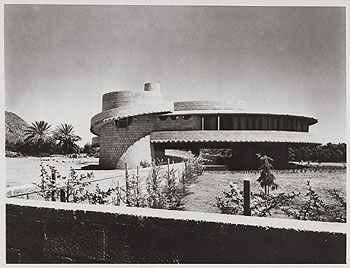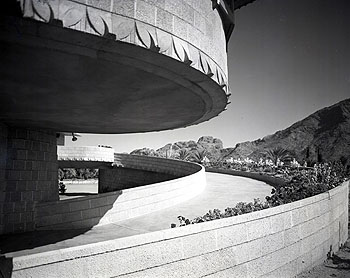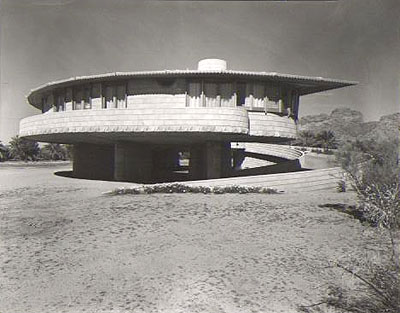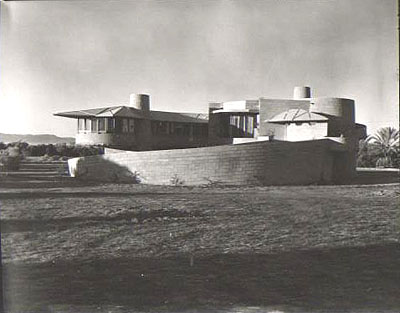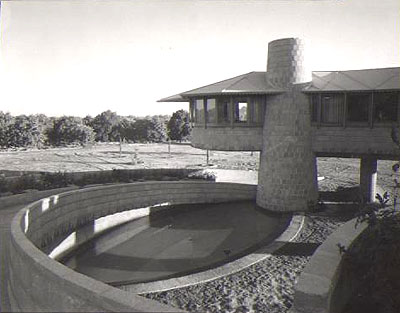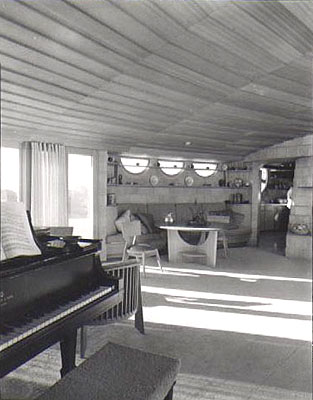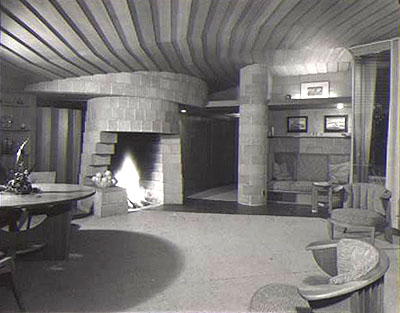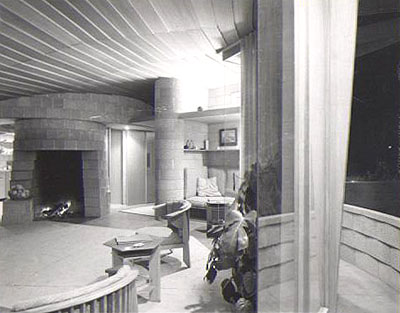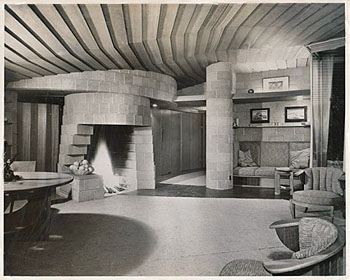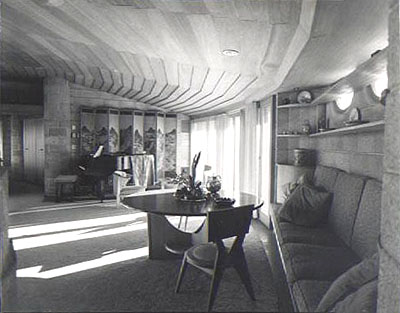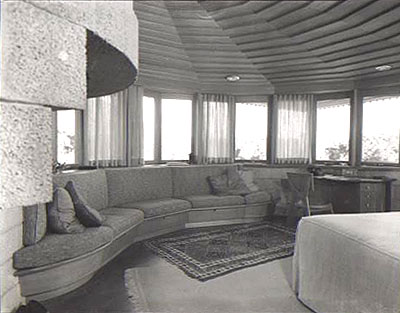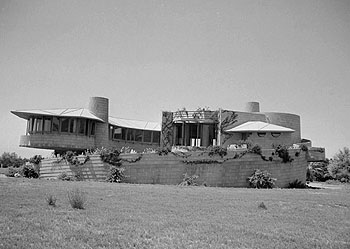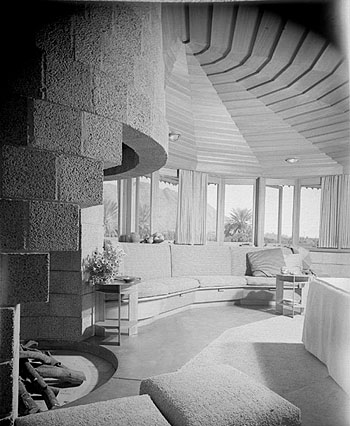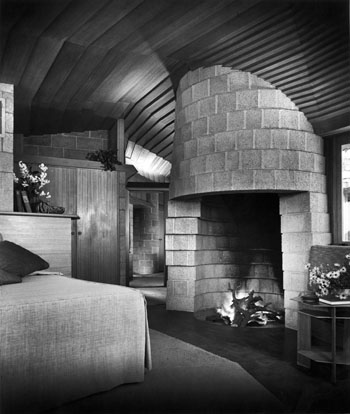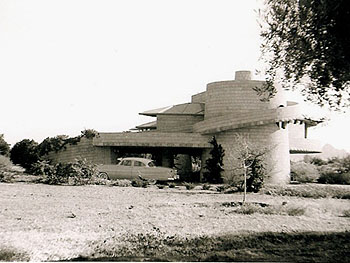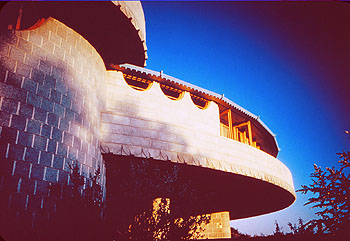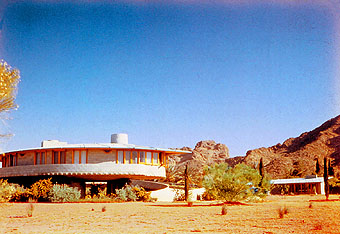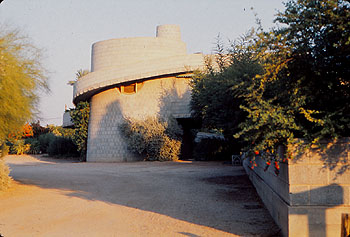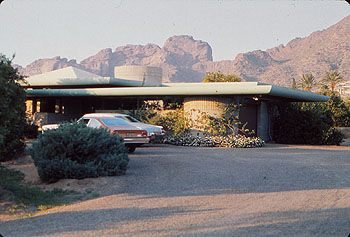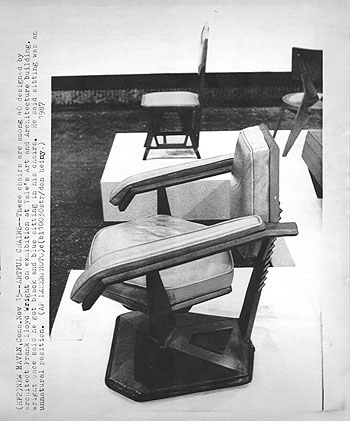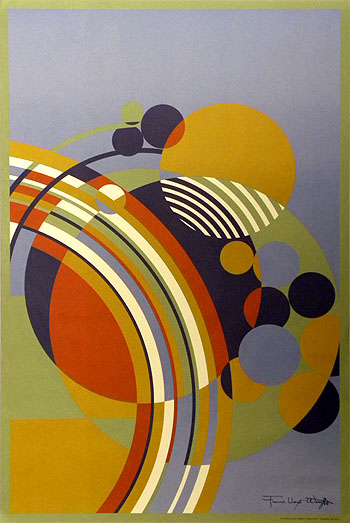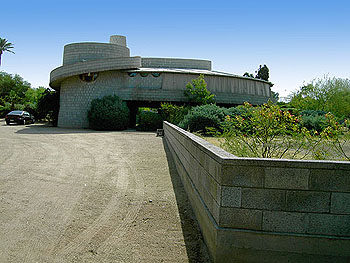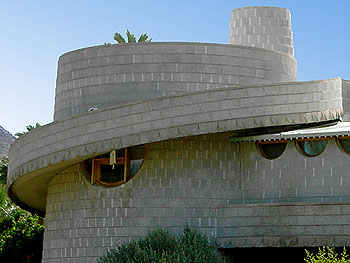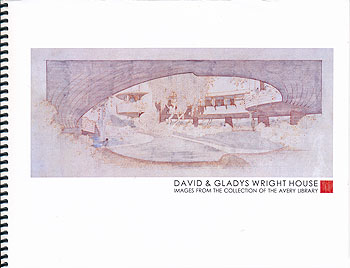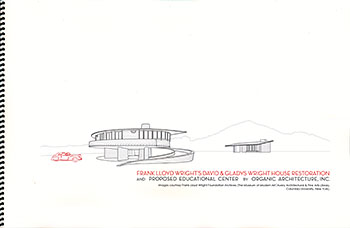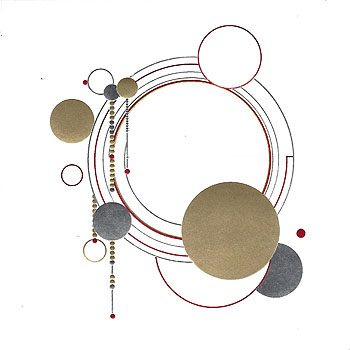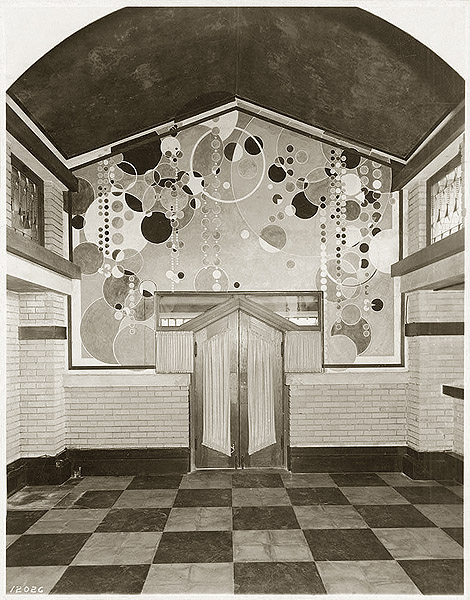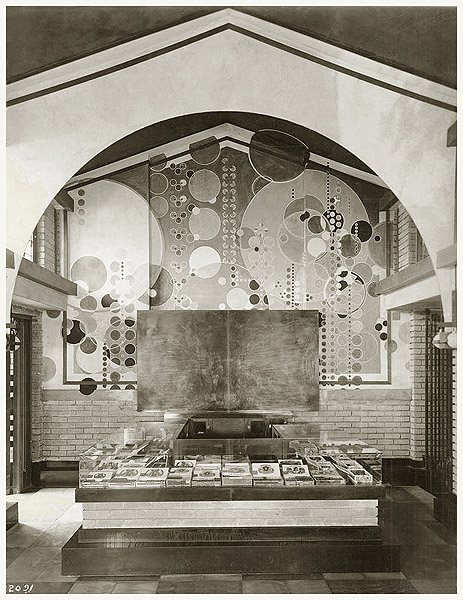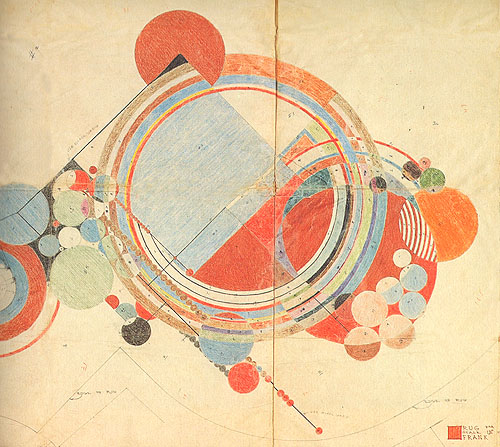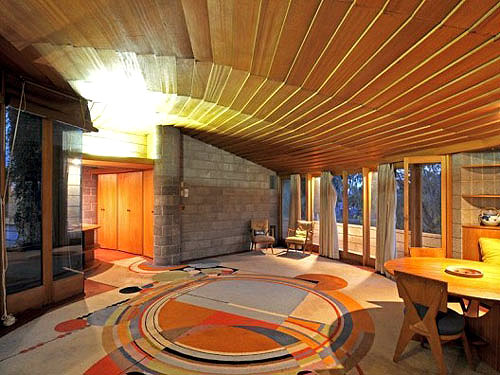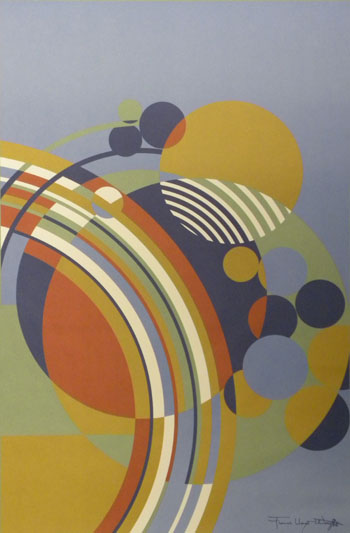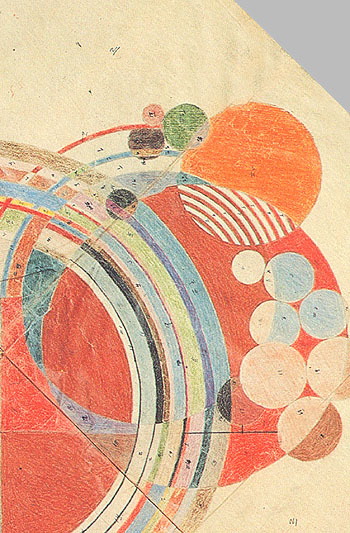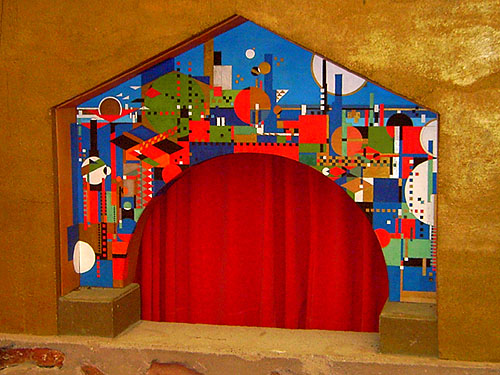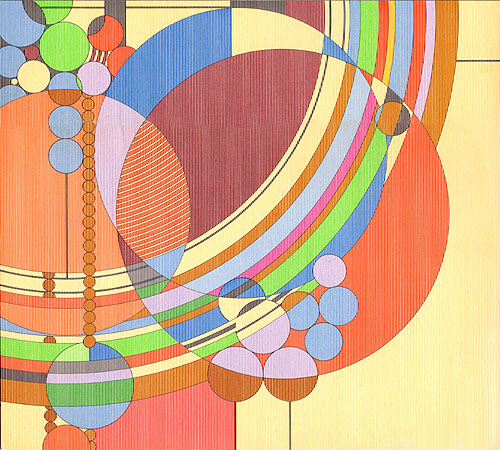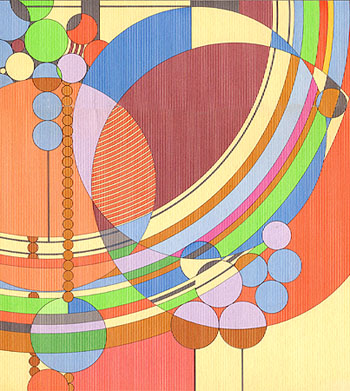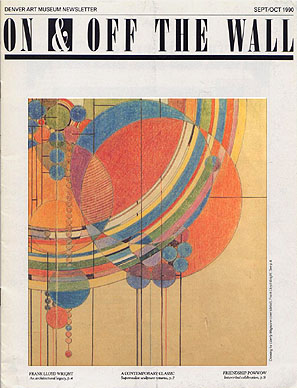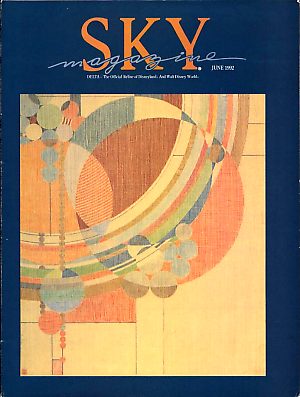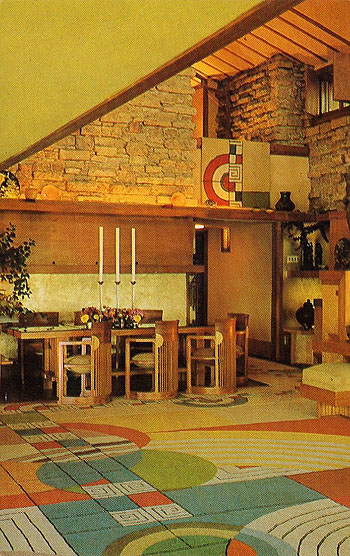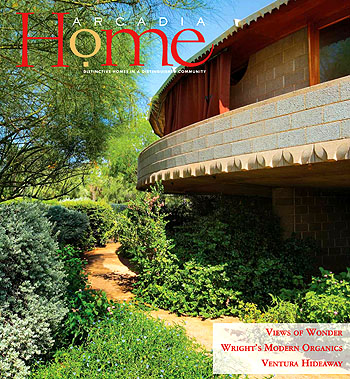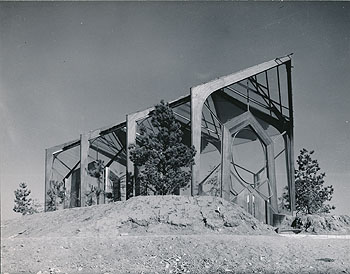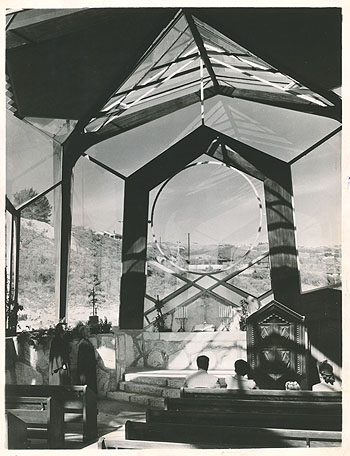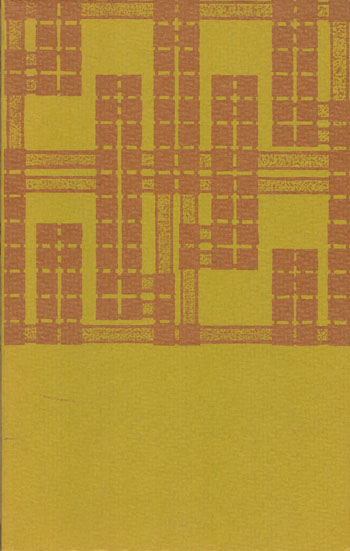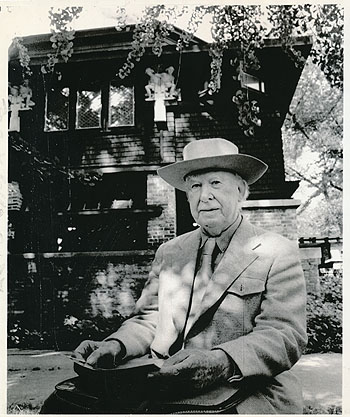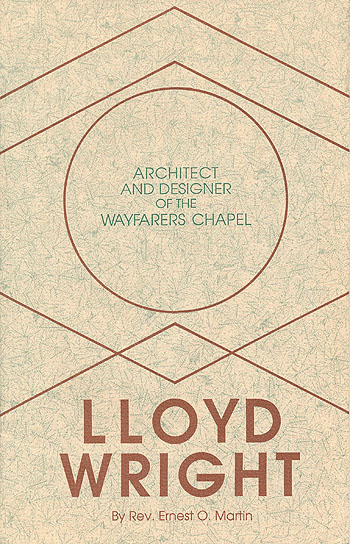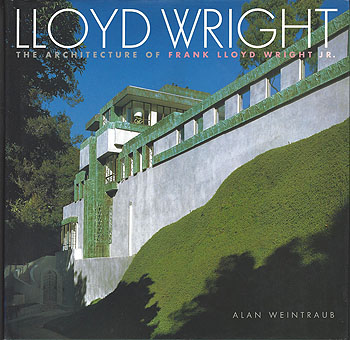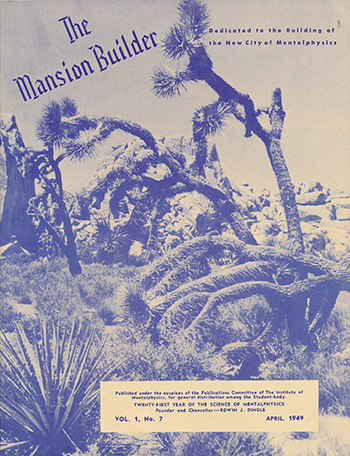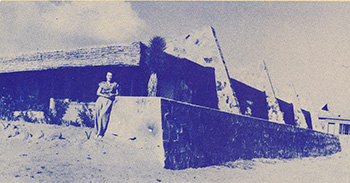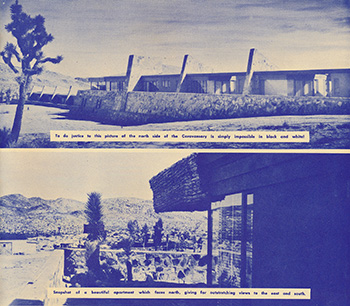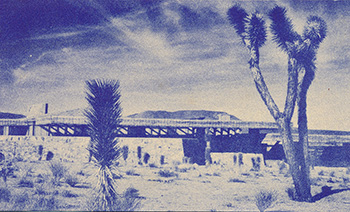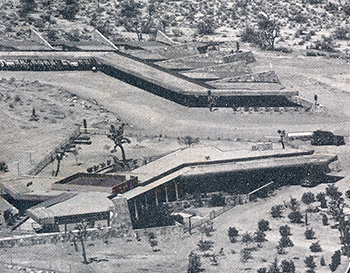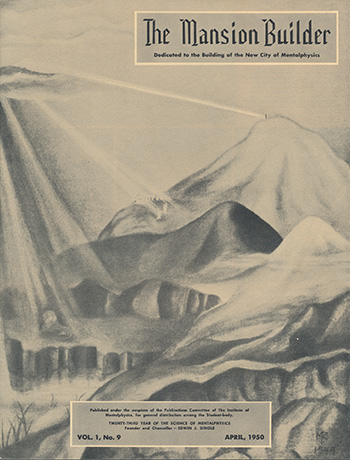
SUPPORT THE
WRIGHT LIBRARY
PROCEEDS FROM EVERY SALE GOES TO SUPPORT THE WRIGHT LIBRARY.
CLICK TO ORDER.
WE PROUDLY SUPPORT THE FRANK LLOYD WRIGHT FOUNDATION

WE PROUDLY SUPPORT THE FRANK LLOYD WRIGHT BUILDING CONSERVANCY
WE PROUDLY SUPPORT FALLINGWATER
AND THE WESTERN PENNSYLVANIA CONSERVANCY

WRIGHT CHILDREN
Frank Lloyd Wright married Catherine Lee Tobin in 1889 and had four sons and two daughters. Divorced in 1922. Was involved with, but never married Mamah (Borthwick) Cheney. She was killed in 1914. Married Miriam Noel in 1923, divorced in 1927. Married Olga Ivanova Hinzenberg Milanoff in 1928. They had one daughter Iovanna Lloyd Wright.
Children of Frank Lloyd and Catherine Wright:
1) Frank Lloyd Wright, Jr. (Lloyd Wright) (Son) (March 30, 1890 - May 31, 1978, Santa Monica, California) He married Elaine B. Hyman in 1917, divorced. He married Helen (Taggart) Pole in 1926 and had one son, architect Eric Lloyd Wright. Lloyd Wright was a landscape architect and architect, Los Angeles and Southern California. Most well know projects were the Wayfarers Chapel, Palos Verdes, California and the Hollywood Bowl (demolished). He worked with his father on the 1920 California homes. He was also involved in the Huntington Hartford projects. For additional information see "Lloyd Wright: Architect".
2) John Lloyd Wright (Son) (December 12, 1892 - December 20, 1972, San Diego, CA) He married Jeanette Winter in 1914, divorced in 1920. He married Hazel Josephine Lundin in 1921 and had one daughter and one son. Divorced in 1942. He married Frances L (Gordon) Welch in 1942. He was an architect and toy inventor, most notably Lincoln Logs (1916). He assisted his father on the Midway Gardens in Chicago and Imperial Hotel in Tokyo. He authored "My Father who is on Earth" (1946), describing his childhood memories and his relationship.
3) Catherine Dorothy (Wright ) Baxter (Daughter) (January 12, 1894 - January 27, 1979). She married Kenneth Stuart Baxter in 1919 and had two sons and one daughter, Anne Baxter, the famous Hollywood actress. She was a homemaker and interior designer.
4) David Samuel Wright (Son) (September 26, 1895 - November 1, 1997).He married Helen Genevieva Willard in 1923 and had one son. She passed away in 1933. Married Charlotte Quinn in 1935, but soon after divorced after. Married Gladys W. Bowman in 1937. During the time he sold concrete blocks, his father designed a home for him in 1950 (S.322), Phoenix, Arizona, using concrete blocks.
5) Frances Lloyd (Wright) Caroe (daughter) (September 3, 1898 - February 11, 1959) Married Richard Andrews Suppes in 1920, divorced in 1934. Married Oscar Emil Caroe in 1934 and had one daughter. In the 1940s she was the director of America House, New York City. It was established in 1940 as a cooperative retail store in New York City to promote and market contemporary American craft.
6) Robert Llewellyn Wright (Son) (November 5, 1903 - February 22, 1986, Bethesda, Maryland) Married Elizabeth Bryant Kelher in 1933. They had two sons and one daughter. Llewellyn Wright was an attorney. His father designed a home for him in 1953 (S.358), Bethesda, Maryland.
Children of Frank Lloyd and Olgivanna Wright:
7) Svetlana Hinzenburg Peters (1917-1946) (Olgivanna daughter from first marriage, Wright adopted). Married apprentice and longtime Fellowship member William Wesley "Wes" Peters. She was killed in an automobile accident in 1946.
8) Iovanna Lloyd (Wright) Howe, Pieper, Gardner, Binnie, Schiffner (December 2, 1925 - ) Married apprentice Waring Howe, March 20, 1945. Married apprentice Arthur Pieper (1952 - S.349), June 18, 1954, her second marriage. Married apprentice Charles Gardner, third husband. Married apprentice Andrew Binnie, had one daughter. Married apprentice Lath Schiffner, October 1972, fifth husband. She was the only child of Frank Lloyd and Olgivanna Wright. Grew up at both Taliesin and Taliesin West. Involved in many of the Festivals of Music at Taliesin, 1957-1970. Wrote "Architecture: Man in Possession of His Earth" in 1962.David & Gladys Wright Lloyd Wright Robert Llewellyn Wright Iovanna Lloyd Wright
DAVID AND GLADYS WRIGHT HOUSE (1950 - S.322) ANATOMY OF A DESIGN "MARCH BALLOONS" ARCADIA HOME Ground Level. Main Level.
Date: Circa 1950
Title: David & Gladys Wright House Site Circa 1950 (1950 - S.322).
Description: Frank Lloyd Wright visits the site of David & Gladys Wright’s house, Phoenix, Arizona. In 1950, David Wright, Frank Lloyd Wright’s fourth child, asked his father to design a home for he and his wife on a lot they owned in Phoenix. Wright called the design "How to live in the Southwest", which was published in the June 1953, "House & Home." The lot was located in the middle of a citric grove, so Wright designed the living space to float above the tree line. David owned a company that manufactured and distributed concrete block. The decorative blocks were designed specifically for this home. Others were standard blocks manufactured by his company. At some point during the beginning of 1950, Wright must have visited the site. After studying the view from the site, we were able to confirm that the view of the Camelback Mountains in the background, matches the view from the site. Note: This photographs was published on the cover of The Frank Lloyd Wright Quarterly, Spring, 1997, and is dated February 5, 1952. But, if this is the site of David Wright’s home, as we suspect, it appears to be a vacant lot, void of construction, which would date this photograph 1950. The car Wright is leaning against is a 1948 Buick Eight Roadmaster.
Size: Original 10 x 8 B&W photograph
S#: 0831.87.0320Date: Circa 1950-1955 Title: David & Gladys Wright House, set of 31 historic photographs.
Description: David & Gladys Wright House 1950-1955. Frank Lloyd Wright designed this home for his fourth child David, in March, 1950. Wright called the design "How to live in the Southwest", and was published in the June 1953, "House & Home." The lot was located in the middle of a citric grove, so Wright designed the living space to float above the tree line. David owned a company that manufactured and distributed concrete block. The decorative blocks were designed specifically for this home. Others were standard blocks manufactured by his company. Courtesy of the David & Gladys Wright family. As originally designed by Wright, when visitors approach the home from the drive, they walk under the main level, across the garden court, past the pool, under the master bedroom which cantilevers over the ramp, to the base of the ramp. To the left is the massive circular column which houses the bath/changing room...
Continue, additional images...
S#: 0831.37.0614-1 through 0831.37.0614-31
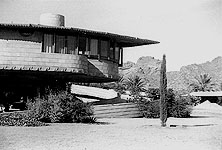
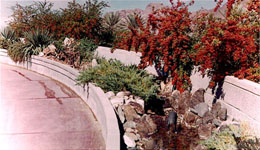
Date: Circa 1951 Title: Wright, David Wright House circa 1951 (1950 - S.322).
Description: Viewed from the North. View of the master bedroom which cantilevers to the left. The walls and roof are complete. Waiting for installation of windows. The lower level of the large massive column houses the bath/ changing room for the pool. The second level of the column is the master bedroom fireplace. Although the column anchors the eastern end of the home, the main level cantilevers past it and seems to float above the ground. The master bedroom is on the left, the bedroom gallery is on the right.
Size: 10 x 7.5 B&W photograph.
S#: 0857.22.0215
Date: Circa 1952
Title: Wright, David Wright House, Phoenix, AZ, 1952 (1950 - S.322).
Description: Viewed from the Southwest. The large circular kitchen is on the left . The solid wall with the three half-circular windows is the dining room. The living room is to the right. Three double doors open out to the long circular balcony. Between the living room and the master bedroom on the far right are two additional bedroom and two bathrooms. The circular ramp on the left, which wraps around the kitchen, leads to the rooftop sundeck above the living room. Camelback Mountain can be seen in the background. Label pasted to verso: "W 20, USA Arch. The University Gallery. Northrop Memorial Auditorium, University of Minnesota. Minneapolis, Minnesota. Wright, Frank Lloyd. American, 1869-1959. Phoenix, Arizona. Res, David Wright, 1952. West. Wayne Andrews Photo 1826." Additional photograph published in Architecture in America, Andrews, 1960, p.152. Photographed by Wayne Andrews. Acquired from the archives of the University of Minnesota.
Size: Original 10 x 8 B&W photograph.
S#: 0910.54.0420Date: 1953
Title: David Wright Residence 1953, (1950 - S.322). Viewed from the Southwest.
Description: Photographed for the June issue of House & Home 1953 by Pedro E. Guerrero. Published on page 99. Caption: "This new desert house for his son is a magnificent coil of concrete block." Hand written on verso: "Frank Lloyd Wright - Building Designed By." Label pasted to verso: "The Solomon R. Guggenheim Museum, New York. 1952. David Wright House, Phoenix, Arizona.." Stamped on verso: "Oct 30 1953." Stamped on verso: "P. E. Guerrero."
Size: Original 10 x 8 B&W photograph.
S#: 0987.97.0218Date: 1953 Title: David Wright Residence (1950 - S.322) 1953.
Description: Viewed from the Southwest. Photographed for the June issue of House & Home 1953 by Pedro E. Guerrero. Label pasted to verso: "By-line Feature. Supplied by International News Photos, New York. For Release December 27, 1953. The Titan of Architects. Wright (F) – "Son’s house, designed by Mr. Wright for David Wright at Phoenix, Ariz., uses some of the sweeping lines and ‘openness’ which the architect believes takes greatest advantage to add to ‘living freedom’ with modern materials. (International New Photos.)" Stamped on verso: "International New Photos."
Size: Original 9.25 x 7 B&W photograph.
S#: 0987.48.0813
Date: 1953 Title: David Wright Residence 1853. (1950 - S.322).
Description: Viewed from the Southeast. Frank Lloyd Wright designed the David Wright house in 1950. The circular ramp rises to the upper main level. The cantilevered master bedroom is seen on the upper left. Camelback Mountain can be seen in the background on the far right. Wright called the design "How to live in the Southwest". These were photographed by Pedro E. Guerrero for the June issue of House & Home 1953. Guerrero wrote, "This is the essence of the house. We don’t need any others," Mr. Wright told me. House and Home thought otherwise." Published in "Picturing Wright" Guerrero 1994, P.131.
Size: 10 x 8 B&W photograph.
S#: 0987.76.0215
Date: 1953 Title: 1) David Wright House (1950) 1953
Description: The David Wright house was constructed in 1950. Wright called the design “How to live in the Southwest”. These were photographed for the June issue of House & Home 1953. Set of eight 4 x 5 proofs. Similar views in “Picturing Wright” Guerrero 1994, Page 128-131. Photographed by Pedro E. Guerrero. Exterior, beginning of the ramp.
Size: Original 4 x 5 silver gelatin photograph proof.
S#: 0987.10.0207
Date: 1953 Title: 2) David Wright House 1953
Description: Photographed by Pedro E. Guerrero. Exterior, mid view of the ramp.
Size: Original 4 x 5 silver gelatin photograph proof.
S#: 0987.11.0207
Date: 1953 Title: 3) David Wright House 1953
Description: Photographed by Pedro E. Guerrero. Exterior, view from the top of the ramp.
Size: Original 4 x 5 silver gelatin photograph proof.
S#: 0987.12.0207
Date: 1953 Title: 4) David Wright House 1953
Description: Photographed by Pedro E. Guerrero. Interior, view to the left of the fireplace.
Size: Original 4 x 5 silver gelatin photograph proof.
S#: 0987.13.0207
Date: 1953 Title: 5) David Wright House 1953
Description: Photographed by Pedro E. Guerrero. Interior, view of the fireplace. Published in “Frank Lloyd Wright” Treiber 1995, Page 109: Similar views in “Picturing Wright” Guerrero 1994, Page 130.
Size: Original 4 x 5 silver gelatin photograph proof.
S#: 0987.14.0207
Date: 1953 Title: 6) David Wright House 1953
Description: Photographed by Pedro E. Guerrero. Interior, view of the right side of the fireplace.
Size: Original 4 x 5 silver gelatin photograph proof.
S#: 0987.15.0207
Date: 1953 Title: David Wright Residence 1853. (1950 - S.322).
Description: View of the Living Room. Frank Lloyd Wright designed the David Wright house in 1950. The Dining area is to the far left. The Entrance to the home, at the top of the ramp, is to the right of the circular fireplace, behind the built-in seating. Door to ceiling glass doors on the far right, lead to a balcony over looking the courtyard. Wright designed furniture is seen in the foreground on the far right. The David Wright house was constructed in 1950. Wright called the design "How to live in the Southwest". Photographed by Pedro E. Guerrero for the June issue of House & Home 1953. Guerrero wrote, "The exterior curves of David’s Wright house are mirrored inside in features such as the living room fireplace and the furnishings," p.130. Published in "Frank Lloyd Wright" Treiber 1995, Page 109: Similar views in "Picturing Wright" Guerrero 1994, Page 130.
Size: 10 x 8 B&W photograph.
S#: 0987.77.0215
Date: 1953 Title: 7) David Wright House 1953
Description: Photographed by Pedro E. Guerrero. Interior, view from the fireplace to the right.
Size: Original 4 x 5 silver gelatin photograph proof.
S#: 0987.17.0207
Date: 1953 Title: 8) David Wright House 1953
Description: Photographed by Pedro E. Guerrero. Interior view of the Master Bedroom from the fireplace which is on the left.
Size: Original 4 x 5 silver gelatin photograph proof.
S#: 0987.16.0207
Date: 1955 Title: David Wright Residence Exterior View Circa 1955, (1950 - S.322).
Description: Viewed from the Northeast. Frank Lloyd Wright designed the David Wright house in 1950. The circular ramp in the foreground rises to the upper main level. The cantilevered master bedroom is on the left. Just to the right of the massive master bedroom fireplace chimney are the windows in the gallery. The large windows in the center are the living room. Glass corners are mitered. A set of doors open out to a balcony overlooking the garden court. The entrance is on the right at the top of the ramp. The circular ramp on the far right, which wraps around the kitchen, leads to the rooftop sundeck above the living room. Photographed by Maynard L. Parker.
Size: 10 x 7 B&W photograph.
S#: 1092.79.0215
Date: 1955 Title: David Wright Residence Master Bedroom Circa 1955, (1950 - S.322).
Description: Viewed from the Southwest. Frank Lloyd Wright designed the David Wright house in 1950. Wright called the design "How to live in the Southwest". One of the two circular fireplaces in the home is on the far left. Built-in seating covers the North wall, just below the horizontal band of windows. Three drawers are built into the seating. Two Wright designed end-tables border the built-in seating. Not only is the room and fireplace circular in design, but the red Philippine mahogany ceiling continues the design. Photographed by Maynard L. Parker.
Size: 8 x 10 B&W photograph.
S#: 1092.80.0215
Date: 1955 Title: David Wright Residence Master Bedroom Circa 1955, (1950 - S.322).
Description: Viewed from the Northeast. Frank Lloyd Wright designed the David Wright house in 1950. Wright called the design "How to live in the Southwest". Built-in cabinetry is in the background on the left. The Gallery that leads past the other two bedrooms to the Living Room is in the center. One of the two circular fireplaces in the home is on the far right. A Wright designed end-tables is seen on the far right. Not only is the room and fireplace circular in design, but the red Philippine mahogany ceiling continues the design. Photographed by Maynard L. Parker.
Size: 8 x 9.5 B&W photograph.
S#: 1092.81.0215
Date: 1955 Title: David Wright Residence Exterior Circa 1955, (1950 - S.322).
Description: Viewed from the Northwest. Frank Lloyd Wright designed the David Wright house in 1950. Wright called the design "How to live in the Southwest". The ramp begins on the left and wraps around up to the entrance on the second level. The master bedroom is in the background on the left. on the left, the main entrance is in the center, the large circular kitchen is on the right. The circular ramp on the right, which wraps around the kitchen, leads from the outer entrance to the rooftop sundeck above the living room. Courtesy of the David Wright family.
Size: 10 x 7.5 B&W photograph.
S#: 1092.82.0215
Date: 1956
Title: Arizona - David Wright House 1956 (1950 - S.322).
Description: A9) Original set of 17 color slides (of a set of 18 slides) from the Color Classics From Arizona Highways offered in the February 1956 issue of Arizona Highways. View of David Wright house from the Southwest. It was designed by Frank Lloyd Wright for his son David in 1950 and was completed in 1953. Published on page 20. Caption: "Exterior of the David Right Patio – House." Printed on sleeve: "A9 -"Taliesin West (sic). Exterior of Patio House."
Size: Original 35mm color slide and 10.5 x 15.5 high res digital image.
S#: 1147.78.0118 (9)Date: 1956
Title: Arizona - David Wright House 1956 (1950 - S.322).
Description: A10) Original set of 17 color slides (of a set of 18 slides) from the Color Classics From Arizona Highways offered in the February 1956 issue of Arizona Highways. View of David Wright house from the Southeast. The Guest House can be seen to the right. Camelback Mountain is to the far right. The house was designed by Frank Lloyd Wright for his son David in 1950 and was completed in 1953. Published on page 20. Caption: "Patio-House Toward Camelback." Printed on sleeve: "A10 -"Taliesin West (sic). Patio House Looking Toward Camelback."
Size: Original 35mm color slide and 10.5 x 15.5 high res digital image.
S#: 1147.78.0118 (10)Date: 1975
Title: David & Gladys Wright Residence 1975 (1950 - S.322).
Description: Viewed from the west. Frank Lloyd Wright designed this home for his fourth child David, in March, 1950. Wright called the design "How to live in the Southwest", and was published in the June 1953, "House & Home." The lot was located in the middle of a citric grove, so Wright designed the living space to float above the tree line. David owned a company that manufactured and distributed concrete block. The decorative blocks were designed specifically for this home. Others were standard blocks manufactured by his company. David was born in 1895 and past away in 1997 at the age of 102. Gladys past away in 2008 at the age of 104. Photographed when the house was 25 years old. Hand written on slide: "Wright, Frank Lloyd. David Wright Res. Phoenix." Stamped on slide: "Nov 75." Photographed by Elizabeth H. Dull, PhD.
Size: 35mm slide and 11.5 x 8 high res color digital photograph.
S#: 1996.27.0617Date: 1975
Title: David Lloyd Wright Residence 1975.
Description: Designed for Frank Lloyd Wright’s grandson, by Wright’s son, Lloyd Wright. Viewed from the South, the address is 5226 East Exeter, Phoenix. The home is now demolished. Because of the close proximity the David Wright’s house, it was assumed that this was a guest house on the property. There is a guest house on the North side of the property designed by John Howe. Hand written on slide: "Wright, Frank Lloyd. David Wright Guest House 1954, David Wright Res. Phoenix." Stamped on slide: "Nov 75." Photographed by Elizabeth H. Dull, PhD.
Size: 35mm slide and 11.5 x 8 high res color digital photograph.
S#: 1996.28.0617Date: 1987
Title: Price Tower Chair 1987 (1952 - S.355).
Description: View of Price Chair exhibited at Yale’s Architecture Building designed in 1953-1956. Text on face: "New Haven, Conn. Nov 15 – Artful Chairs are among 40 designed by architect Frank Lloyd Wright on exhibition at Yale’s Art and Architecture building. Wright once said he got black and blue sitting in his chairs. He said sitting was an unnatural position. (AP... don heiny.) 1987." Seen behind the Price Chair, on the left, is a chair designed by Wright for the Imperial Hotel, 1915-1916. On the right is a Dining Room Chair designed in 1950 for the David Wright Residence and also used in the Theodore and Bette Pappas Residence, 1955. Photographed by Don Heiny.
Size: Original 7.5 x 8.5 B&W photograph.
ST#: 1987.101.0218Date: Circa 1997 Title: Frank Lloyd Wright (David Wright Carpet Design) (Produced by Mani-G ‘Raps & Co.) "The Frank Lloyd Wright Collection, Mani-G ‘Raps & Co." (Label on verso: U: 1012167, V#: 150-05020-16, g: Mani G Raps, H Rug Flat Sheet R, 20x30). An adaptation of the David Wright Carpet.
Description: David Wright Residence (1950) (S.322). The carpet was installed after Guerrero photographed the home in 1953. It had its origins in 1926. Wright adapted the design for the carpet from a design from one of a series of 12 abstracts he created for the covers of Liberty Magazine in 1926-28 entitled "March Balloons". The covers were never published. It is reminiscent of the murals he created for the North and South walls of the Tavern in Midway Gardens (1913) entitled "City by the Sea". In 1956-57 Wright adapted "City by the Sea" for a mural design in the Music Pavilion at Taliesin West.
Size: 20 x 30
ST#: 1997.47.1209
Date: 2004 Title: Wright, David & Gladys Wright House (1950) 2004. Set of 13 photographs.
Description: Frank Lloyd Wright designed this home for his fourth child David, in March, 1950. Wright called the design "How to live in the Southwest", and was published in the June 1953, "House & Home." The lot was located in the middle of a citric grove, so Wright designed the living space to float above the tree line. David owned a company that manufactured and distributed concrete block. The decorative blocks were designed specifically for this home. Others were standard blocks manufactured by his company. David was born in 1895 and past away in 1997 at the age of 102. Gladys past away in 2008 at the age of 104. She was living in the home when these photographs were taken. Photographed on April 26, 2004 by Douglas M. Steiner... Continue, additional images...
Size: Thirteen 10 x 7.5 color photographs
ST#: 2004.37.0614 (1-13)
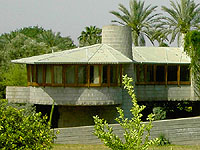
Continue, additional images...
Date: 2015
Title: David & Gladys Wright House. Images From The Collection of The Avery Library (Soft Cover Spiral Bound) Published by the David and Gladys Wright House Foundation, Phoenix, Arizona)
Author: Rawling, Zach
Description: This Special Edition is a collection of images of the David & Gladys Wright House designed by Frank Lloyd Wright in 1950 for his son & daughter-in-law, from the collection at the Avery Library at Columbia University in New York City. Includes color drawings and designs, and black & white historic photos. The house was built in 1952 in the Arcadia neighborhood of Phoenix, Arizona. The Drawings: Sixty-five color and B&W images of the original drawings. The Historic Photos: Sixty-eight B&W photographs taken during the construction of the Wright House. The Pedro Guerrero Collection: Thirty-nine B&W photographs taken after completion of the Wright House. (Special Edition)
Size: 11 x 8.5
Pages: Pp 124
ST#: 2015.38.1121Date: 2015
Title: Frank Lloyd Wright’s David & Gladys Wright House Restoration and Proposed Educational Center (Soft Cover Spiral Bound) (Published by Organic Architecture, Inc., Chandler, Arizona. Limited Edition.)
Author: Organic Architecture, Inc.
Description: Introduction: In 1950, Frank Lloyd Wright designed a home for his son David and daughter-in-law Gladys on ten acres in the middle of citrus groves at the base of Camelback Mountain in Phoenix, Arizona. The design elevated the home in the form of a spiral rising from the desert floor, converting the tree tops into the lawn and revealing 360 degree views of the mountains forming the valley. Mr. Wright titled the plans “How to Live in the Southwest”. Completed in 1952, the David Wright House is one of three spiral designs realized by Mr. Wright and the precursor to the Guggenheim Museum in New York City. The house is regarded as Mr. Wright’s last residential masterpiece. Images courtesy Frank Lloyd Wright Foundation Archives (The Museum of Modern Art | Avery Architectural & Fine Arts Library, Columbia University, New York).
Size: 17 x 11
Pages: Pp 60
ST#: 2015.41.0522Date: 2015
Title: Frank Lloyd Wright‘s David & Gladys Wright House Restoration and Proposed Educational Center (Digital) (Published by Organic Architecture,. Inc., Chandler, Arizona.)
Author: Organic Architecture, Inc
Description: City of Phoenix. Pre-Application Submittal Package. July 31, 2015. On Behalf of the David and Gladys Wright House Foundation. Introduction: In 1950, Frank Lloyd Wright designed a home for his son David and daughter-in-law Gladys on ten acres in the middle of citrus groves at the base of Camelback Mountain in Phoenix, Arizona. The design elevated the home in the form of a spiral rising from the desert floor, converting the tree tops into the lawn and revealing 360 degree views of the mountains forming the valley. Mr. Wright titled the plans “How to Live in the Southwest”. Completed in 1952, the David Wright House is one of three spiral designs realized by Mr. Wright and the precursor to the Guggenheim Museum in New York City. The house is regarded as Mr. Wright’s last residential masterpiece. Images courtesy Frank Lloyd Wright Foundation Archives (The Museum of Modern Art | Avery Architectural & Fine Arts Library, Columbia University, New York).
Size: 17 x 11
Pages: Pp 10
ST#: 2015.42.0522Date: 2015
Title: David & Gladys Wright House Foundation 2015 Christmas Card (1950 - S.322).
Description: Cover: Adaptive illustration of the Frank Lloyd Wright designed David Wright Carpet. Inside: "Wishing you a Holiday Season filled with beauty, celebration and inspiration. David and Gladys Wright House Foundation." Signed: Zach Rawling, Sarah Levi.
Size: 6.25 x 6.25
ST#: 2015.20.1215
ANATOMY OF A DESIGN "MARCH BALLOONS"
David Wright Residence Carpet. The carpet was installed after Guerrero photographed the home in 1953. It had its origins in 1926. Wright adapted the design for the carpet from a design from one of a series of 12 abstracts he created for the covers of Liberty Magazine in 1926-28 entitled "March Balloons. The covers were never published. It is reminiscent of the murals he created for the North and South walls of the Tavern in Midway Gardens (1913) entitled "City by the Sea". In 1956-57 Wright adapted "City by the Sea" for a mural design in the Music Pavilion at Taliesin West. "City by the Sea", North wall of the Tavern in Midway Gardens (1913). "March Balloons is reminiscent of the murals he created for the North and South walls of the Tavern in Midway Gardens. In 1956 Wright adapted "City by the Sea" for a mural design in the Music Pavilion at Taliesin West. "City by the Sea", South wall of the Tavern in Midway Gardens (1913). "March Balloons is reminiscent of the murals he created for the North and South walls of the Tavern in Midway Gardens. In 1956 Wright adapted "City by the Sea" for a mural design in the Music Pavilion at Taliesin West. 1926 Design "March Balloons". Wright designed a series of 12 abstracts for the covers of Liberty Magazine from 1926-1928. The design for the March cover was entitled "March Balloons". The covers were never published, but Wright utilized the designs over the years. "March Balloons" was published on the cover of "Frank Lloyd Wright, Graphic Artist" Fowler, 2002. David and Gladys Wright Residence Carpet Design. The carpet was installed after Guerrero photographed the home in 1953. It had its origins in 1926. Wright adapted the design for the carpet from a design from one of a series of 12 abstracts he created for the covers of Liberty Magazine in 1926-28 entitled "March Balloons." Courtesy of The Frank Lloyd Wright Foundation. David and Gladys Wright Residence 2009. The Wright designed carpet was installed after Guerrero photographed the home in 1953. Courtesy Curbed.com.
The Frank Lloyd Wright 1997 Poster (David Wright Carpet Design) on the left is an adaptation of the David Wright Carpet on the right. . Taliesin West Music Pavilion mural "City by the Sea" designed in 1956. In 1956 Wright adapted the Midway Gardens "City by the Sea" Murals for this mural design in the Music Pavilion at Taliesin West. Photographed by Douglas M. Steiner, Copyright 2004. The Taliesin Festival of Music and Dance, 1970. "March Balloons" was adapted by The Taliesin Fellowship for the cover of this program.
Wright's original "March Balloons" design as published on the cover of "Frank Lloyd Wright, Graphic Artist" Fowler, 2002, compared with the adaptation published on the cover of the "The Taliesin Festival of Music and Dance, 1970". Denver Art Museum Newsletter: On & Off The Wall - September / October 1990 Sky Magazine - June 1992 Side Note... Side Note: Adaptation of March Balloons for carpet Dining and Living room at Taliesin III. Postcard of Taliesin, Spring Green, Wisconsin, Circa 1960. Also see: ; "Frank Lloyd Wright, Complete Works 1917-1942" Pfeiffer 2010, page 166.
ARCADIA HOME Date: Winter 2008 Title: Arcadia Home - Winter 2008 (Published by Arcadia News, Phoenix, AZ)
Author: Bruns, Greg; Peters, Joanna
Description: David and Gladys Wright home (1950) (S.322), Phoenix, Arizona, is for sale. "Wright’s Modern Organics... The interior ceilings, bookcases, cabinets, built-ins seating and storage, all originals, are carved out of Philippine mahogany. The concrete floor in the living room is adorned with a Frank Lloyd Wright designed rug... So many aspects of the home seem far ahead of their time..." Includes eleven photographs. (David Wright Home)
Size: 11 x 12. Digital and printed version.
Pages: Pp Cover, 3, 6-9
ST#: 2008.05.0110
LLOYD WRIGHT (FRANK LLOYD WRIGHT JR.) Date: 1951
Title: Wayfarers’ Chapel, Palos Verdes, CA, 1951, Lloyd Wright (Frank Lloyd Wright Jr.).
Description: Exterior view of Wayfarers’ Chapel, designed by Lloyd Wright. Constructed of wood and glass. The walls and ceiling are of glass. Mounted to gray board. Label pasted to board: : "West 20, US Arch. Wright, Lloyd. Palos Verdes, California. Wayfarers’ Chapel. 1951. Photo: Andrews. #1071." Photographed by Wayne Andrews.
Size: Original 9 x 7 B&W Photograph.
S#: 0857.39.0220Date: 1951
Title: Wayfarers’ Chapel 1951 - Lloyd Wright (Frank Lloyd Wright Jr.)
Description: View of Wayfarers’ Chapel, designed by Lloyd Wright. Clipping pasted to verso: "Plate glass walls and roof, with redwood supports, form the unusual Wayfarer’s chapel on the coast road south of Los Angeles. It was designed by Lloyd Wright, son of Wisconsin's famed architect, Frank Lloyd Wright. The Church of the New Jerusalem (Swedenborgian) plans to erect another similar building at the spot. Worshipers will be able to enjoy the beauty of the outdoors." Stamped on clipping: "Jun 17 1951." Stamped on verso: "The Milwaukee Journal." Also: "Religious News Service Photo, New York."
Size: Original 8 x 10 B&W photograph.
S#: 0857.32.0218Date: 1971 Title: Lloyd Wright, Architect: 20th Century Architect in an Organic Exhibition (Soft Cover) (Published by Art Galleries, University of California, Santa Barbara, California)
Author: Gebhard, David and Harriette Von Breton
Description: Lloyd Wright, an architect in his own right was the eldest son of Frank Lloyd Wright. This is a catalog for an exhibition organized by David Gebhard and Harriette Von Breton for the Art Galleries, University of California, Santa Barbara, from November 23 to December 22, 1971. Extensive biography describes his life growing up in the Wright household, and his experience assisting his father before 1930. Includes numerous illustrations and photographs of his work, as well as a few of his father’s work while he assisted him. Also includes: A chronological list of writings on and illustrations of his buildings; Writings by Lloyd Wright; An extensive selected list of building and projects and A chronology of his life. (First Edition) (Sweeney 1847)
Size: 7 x 11
Pages: Pp 101
S#: 1847.00.1112
Date: 1974
Title: Lloyd Wright (Frank Jr.). Frank Lloyd Wright oldest child.
Description: Lloyd Wright sitting in front of the Frank Lloyd Wright Home and Studio, Oak Park. The sculptures "Two Seated Males" can be seen in the background. They were added to the exterior of the studio after 1911. When the Restoration committee made the decision in 1977 to restore the Home and Studio to 1909, the sculptures were removed. Stamped on verso: "Jul 19 1974." Clipping pasted to verso: "Architect Lloyd Wright, 84-year-old son of the late Frank Lloyd Wright, reminisces in front of his boyhood home in Oak Park, a suburb of Chicago. The home, which is the oldest standing residence solely designed by his father, has been purchased by preservationists and Wright will assist in restoring it."
Size: Original 8 x 9 B&W photograph.
S#: 1963.26.041Date: 1988
Title: The Biography of Lloyd Wright. Son of Frank Lloyd Wright. Architect and Designer of the Wayfarers Chapel (Published by The Wayfarers Chapel, Rancho Palos Verdes, California)
Author: Martin, Rev. Ernest O.
Description: "Lloyd Wright viewed the commission to build the Wayfarers Chapel as a ‘God-given opportunity for a God-given purpose.’ The Chapel became his most famous building, for its structure unites his considerable talents in art, architecture, and landscape design in a simple, yet wondrous creation in an Eden-like setting on the shore of the Pacific... Lloyd Wright was born in Oak Park, Illinois, on March 31, 1890, the oldest of six children born to Frank Lloyd Wright and Catherine Tobin. The house he grew up in was one of his father’s earliest designs and also served as his father's studio. In this home his mother directed the nursery school where Lloyd, his siblings, and neighborhood children develop the love and appreciation of music, art, and drama. This early education and cultural milieu was a formative influence in the creative talents of Lloyd. His creativity was further developed through his education at his great aunt's boarding school near Spring Green, Wisconsin, which later became part of Taliesin, Frank Lloyd Wright's home and studio in Wisconsin." (First Edition)
Size: 5.5 x 8.5
Pages: Pp 12
ST#: 1988.103.0619Date: 1998
Title: Lloyd Wright, The Architecture of Frank Lloyd Wright Jr. (Hard Cover DJ) (Published by Harry N. Abrams, Inc., New York)
Author: Weintraub, Alan (Produced and Photographed); Essay: Hines, Thomas S.; Remembrance by Wright, Eric Lloyd, Texts by Hutt, Dana
Description: Dust jacket: Frank Lloyd Wright Jr., known as Lloyd Wright (1870-1978), is arguably one of the greatest undiscovered architects of the 20th century. Over a ten year period, architectural photographer Alan Weintraub has documented his buildings in colour and in fine detail. This monograph offers a comprehensive presentation of Lloyd Wright's complete oeuvre. Lloyd Wright had a style all of his own. His gemlike construction fusing landscape with built form, are syntheses of nature, regional modernism and exoticism. He built most of his work in southern California, mainly in unassuming neighborhoods of Los Angeles. This extensively illustrated book features nearly 600 images. At the book's heart are 32 of Wright's buildings, and the reference section includes an illustrated chronology with archival sketches and images of unbuilt works. 595 illustrations, including 428 plates in full color. (First Edition)
Size: 11.5 x 11.25
Pages: Pp 275
ST#: 1998.98.0818MANSION BUILDER Date: 1949
Title: Mansion Builder - April 1949 (Published by The Institute of Mentalphysics, Los Angeles, California)
Author: Dingle, Edwin J.
Description: Institute of Mental Physics, Joshua Tree Retreat Center. According to their website: “In 1941 the Mentalphysics Spiritual Teaching and Retreat Center was dedicated in Yucca Valley (now Joshua Tree)... the buildings and other structures are all designed by Ding Le Mei, Frank Lloyd Wright, (and son) Lloyd Wright...
“Six years later several beautiful buildings were built reminiscent of Frank Lloyd Wright’s Taliesin West... Wright felt this was an important undertaking but he clashed with Dingle and ultimately passed the job on to his son, Lloyd Wright...”
Lloyd Wright went on to design the center from 1946-57. “In 1945 Edwin Dingle approached Wright (Lloyd) to design a City of Mentalphysics near Yucca Valley, north of Palm Springs. Dingle envisioned the city as a spiritual retreat for the Los Angeles-based religious sect, which he founded in 1927 5... A brochure announced the appointment of Wright as architect and engineer, identifying him as the son of the designer of the Imperial Hotel in Tokyo and stating that Frank Lloyd Wright would be advising on the project...” Lloyd Wright, 1998, Weintraub, p.146-153.
Includes a number of photographs of the retreat center, designed by Lloyd Wright, and yes, it has the feel of Taliesin West.
Size: 8.5 x 11.
Pages: Pp 1-16
S#: 0798.47.0325
Date: 1950
Title: Mansion Builder - April 1950 (Published by The Institute of Mentalphysics, Los Angeles, California)
Author: Dingle, Edwin J.
Description: Institute of Mental Physics, Joshua Tree Retreat Center. According to their website: “In 1941 the Mentalphysics Spiritual Teaching and Retreat Center was dedicated in Yucca Valley (now Joshua Tree)... the buildings and other structures are all designed by Ding Le Mei, Frank Lloyd Wright, (and son) Lloyd Wright...
“Six years later several beautiful buildings were built reminiscent of Frank Lloyd Wright’s Taliesin West... Wright felt this was an important undertaking but he clashed with Dingle and ultimately passed the job on to his son, Lloyd Wright...”
Lloyd Wright went on to design the center from 1946-57. “In 1945 Edwin Dingle approached Wright (Lloyd) to design a City of Mentalphysics near Yucca Valley, north of Palm Springs. Dingle envisioned the city as a spiritual retreat for the Los Angeles-based religious sect, which he founded in 1927 5... A brochure announced the appointment of Wright as architect and engineer, identifying him as the son of the designer of the Imperial Hotel in Tokyo and stating that Frank Lloyd Wright would be advising on the project...” Lloyd Wright, 1998, Weintraub, p.146-153.
Includes a number of photographs of the retreat center, designed by Lloyd Wright, and yes, it has the feel of Taliesin West.
Size: 8.5 x 11.
Pages: Pp 1-16
S#: 0831.125.0325
BACK TO TOP
HOME ARTIFACTS AUDIO BOOKS PERIODICALS PHOTOS POSTCARDS POSTERS STAMPS STUDIES ASSISTING ABOUT SLIDE SHOW To donate or pass on information, comments or questions:
steinerag@msn.com
©Copyright Douglas M. Steiner, 2001, 2025




